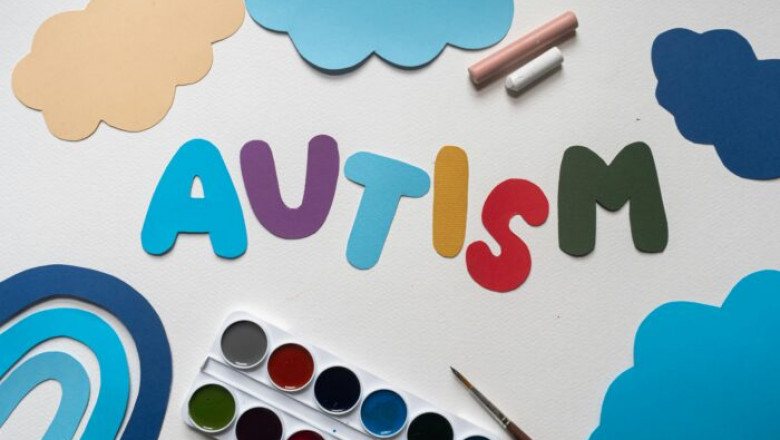views
Managing Chewing Behaviors in Children with Autism Spectrum Disorder
Chewing behaviors are a frequent feature found in children diagnosed with ASD. These behaviors often involve chewing on objects, not food-related items like clothes, pencils, or toys, thus baffling the parents or caregivers. Even though this might seem abnormal or objectionable, chewing usually meets the sensory needs of autistic children.
In this blog, we’ll explore the reasons behind chewing behaviors in autistic children, the connection between these behaviors and Autism Spectrum Disorder symptoms, and practical strategies for managing and supporting children with these sensory needs.
Understanding Chewing Behaviors in Autistic Children
Typical associations of chewing behaviors in children with autism involve sensory processing problems. Sensory processing describes how the brain processes and responds to input from a person's environment. In some children with ASD, the sensory system may become overactive or underactive, and then they would require more than usual stimulation in the environment.
Proprioceptive input—the sensory feedback from the muscles and joints—is also provided by chewing. It can calm the nervous system and help in giving a sense of comfort or focus. Some children may chew on their shirts when they are stressed, and others might bite down on objects when they feel overwhelmed.
These behaviors can be activated by a variety of Autism Spectrum Disorder symptoms, including:
Sensory sensitivities: Children with ASD may be hypersensitive or hypersensitive to sensory input, making chewing a way to self-regulate.
Anxiety and stress: Chewing can be a coping mechanism for managing anxiety, especially in environments that feel overwhelming or unpredictable.
Communication challenges: Difficulty expressing emotions or needs can lead to self-soothing behaviors like chewing.
Attention and focus difficulties: Chewing may help children maintain focus during tasks or activities that require concentration.
Identify Triggers and Patterns
The only way to manage chewing behaviors for autistic children is to know what triggers and patterns are associated with such behaviors. The observation of when, where, and why a child is chewing may help identify the following:
When does the child engage in chewing behaviors? Is it during transitions, in noisy environments, or when they are tired?
Which object does the child prefer to chew? Are they soft, hard or textured?
After chewing how does the child's behavior shift? Do they appear more sedate, concentrated, or less anxious?
Keeping a record of this information will enable caregivers to identify patterns and develop appropriate strategies to use with this child.
Strategies to Manage Chewing Behaviors
Managing chewing behaviors involves a mix of understanding the child's sensory needs, providing safe alternatives, and creating a supportive environment. Here are some practical strategies for you:
1. Safe Chewing Alternatives
Offering safe, sensory-appropriate alternatives can divert chewing behaviors away from inappropriate or unsafe objects. Think about providing:
Chewable necklaces, bracelets, or fidget toys specifically designed for sensory input.
Silicone or rubber chew sticks that are durable and safe.
Textured oral sensory toys that provide varying resistance.
These options can help meet the child's sensory needs while preserving their teeth and preventing damage to household items.
2. Include Oral Motor Activities
Oral motor activities can build the muscles used in chewing and give the sensory input children are looking for. Activities such as blowing bubbles, chewing gum if appropriate for the child's age, or drinking thick liquids through a straw can be helpful.
3. Meet sensory processing needs
Since chewing most of the time is attributed to sensory processing issues, meeting these needs comprehensively will minimize the habit of chewing. Occupational therapy is very useful in this regard. An occupational therapist can:
Conduct a sensory assessment to identify specific sensitivities.
Develop a sensory diet—a personalized plan of sensory activities designed to meet the child's sensory needs throughout the day.
Encourage deep pressure therapy or weighted blankets to help modulate the child's nervous system.
4. Establish a Calm and Predictable Environment
Environmental factors can greatly influence chewing behaviors. Reducing sensory overload through lessening loud noises, bright lights, or chaotic settings helps. A consistent routine provides predictability, which in turn reduces anxiety and the necessity for self-soothing behaviors.
5. Teach Alternative Coping Strategies
As children develop, they can learn alternative ways to cope with stress or sensory needs. Teaching deep breathing exercises, mindfulness techniques, or simple hand fidgeting can gradually replace chewing as a self-regulation method. Visual schedules and social stories can also help children understand and implement these new coping strategies.
Collaboration with Professionals
However, if these chewing behaviors do not resolve or begin interfering with their daily functioning, consulting professional experts might help. Speech and language therapists, occupational therapists, and behavioral therapists can help create specific interventions. These experts can collaborate with the child and family to establish a personalized plan that identifies specific causes for the chewing behavior of the child.
Support Your Child's Sensory Needs
Understanding that these are natural responses to the needs of the senses is key in management. Instead of viewing these behaviors as being problematic, recognizing them as a form of communication and self-regulation will enable caregivers to approach this in a more empathetic and patient manner.
Triggers can be identified and proper alternatives provided, and parents can create a supportive environment, which will help their child with Autism Spectrum Disorder get past their sensory challenges.
If you have questions or need further support, meet with an occupational therapist or contact local autism support groups for valuable information and support specific to your child's requirements.






















Comments
0 comment